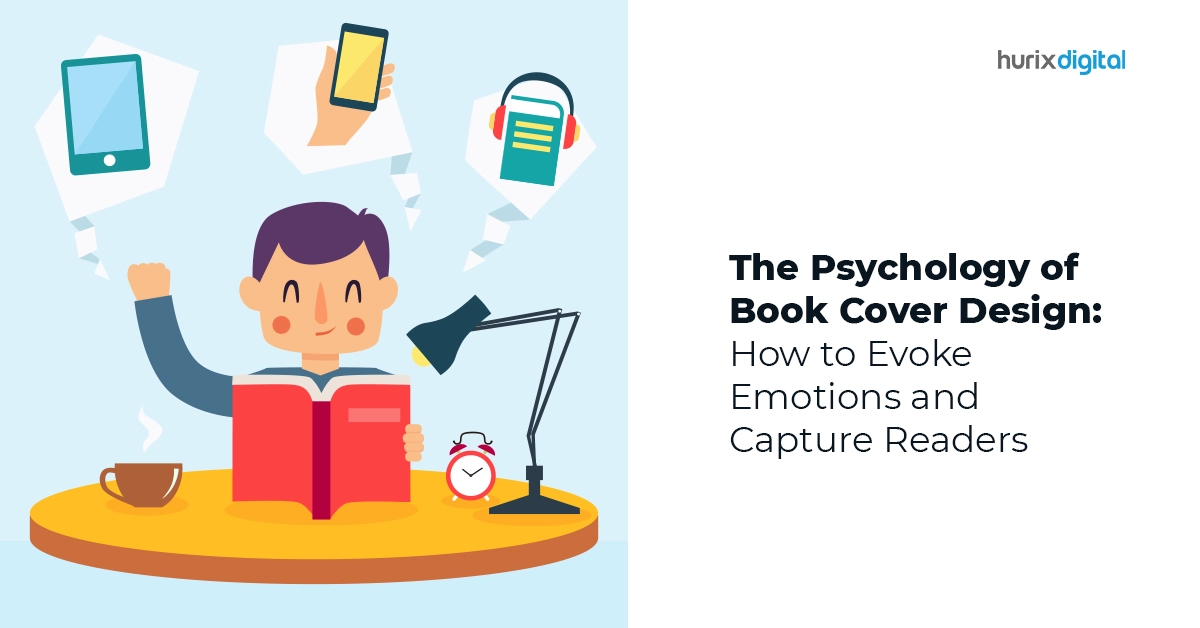Summary
Unlock the secrets of book cover design with insights into the psychology that captivates readers. From the impact of color to layout techniques and branding, discover how the artistry of professional designers can elevate your book's visual presence. Elevate your book with Hurix Digital's expertise in book formatting services and cover design.
In the vast realm of literature, where words weave magic and stories come alive, the cover of a book serves as the gateway to another world. Its design is not just an aesthetic choice but a strategic play on psychology, influencing readers on a subconscious level. The amalgamation of book formatting services, artistic creativity, and the impact of color create a symphony that resonates with potential readers.
Table of Contents:
- The Power of an Appealing Cover
- Six Key Factors to Consider When Designing a Book Cover
1. Color Psychology: A Palette of Emotions
2. Layout Techniques: The Z-Pattern Layout
3. The Art of Subtlety: Patterning and Visual Preference
4. Artistic Creativity: Beyond the Obvious
5. Branding Beyond Words
6. The Impact of Color: More Than Meets the Eye - Conclusion
The Power of an Appealing Cover
First impressions matter, and in the literary world, the saying holds true. An appealing cover is the silent handshake between the author and the reader. It sets the tone for the narrative within, hinting at the genre, theme, and mood of the book. Professional designers understand the nuances of this delicate dance, utilizing their expertise to craft covers that draw readers in.
Six Key Factors to Consider When Designing a Book Cover
1. Color Psychology: A Palette of Emotions
The impact of color on human psychology is profound, and book cover designers leverage this knowledge to evoke specific emotions. Warm tones like reds and oranges may convey passion or urgency, while cool blues and greens may suggest tranquility or mystery. Understanding the psychological associations of colors allows designers to create a visual language that communicates with readers before they even flip a page.
2. Layout Techniques: The Z-Pattern Layout
Visual traction is crucial for a book cover image. The Z-pattern layout, a design principle derived from how our eyes naturally move across a page, is a secret weapon in the arsenal of book cover designers. This layout ensures that the reader’s gaze flows smoothly across the cover, capturing attention and guiding them through a visual journey. Patterning and visual preference play a significant role in this, influencing how readers absorb and interpret information.
Also Read: Print and Digital Design: What Makes Them Unique?
3. The Art of Subtlety: Patterning and Visual Preference
Humans are creatures of habit, and our brains are wired to recognize patterns. Book cover designers tap into this innate tendency by incorporating subtle patterns that engage the viewer’s senses. Whether it’s a recurring motif or a hidden design element, these patterns create a sense of familiarity and intrigue, enticing readers to explore the pages within.
4. Artistic Creativity: Beyond the Obvious
While adhering to principles like the Z-pattern layout and color psychology, artistic creativity allows designers to break free from conventions and breathe life into a cover. This is where the unique essence of a book is captured—a visual representation of the author’s voice. Professional designers balance the need for creativity with an understanding of market trends, ensuring that the cover not only stands out but also resonates with the target audience.
5. Branding Beyond Words
A book cover is not just an isolated entity; it is a crucial element of an author’s brand. Consistency in design across a series or an author’s body of work builds recognition. The visual elements become a signature, creating a bond between the author and their readers. Book cover design, therefore, goes beyond a single project—it is a strategic move in the larger game of establishing an author’s visual identity.
6. The Impact of Color: More Than Meets the Eye
Color isn’t just about aesthetics; it’s a powerful tool that can alter mood, influence behavior, and even affect decision-making. Choosing the right color for a book cover is a delicate dance between artistic expression and psychological impact. Professional designers meticulously select colors to convey the essence of the story, creating a visual language that resonates with the intended emotions.
Also Read: How to Design Eye-Catching Book Covers for Print Publishing in 2024!
Conclusion
Just as a book’s pages contain the story, a narrative’s cover conveys its feelings, themes, and expectations. The psychology of book cover design is an area where artistic expression, color schemes, and layouts come together to create a dance. To completely unlock the potential of your work, partner with pros who understand the silent language that resonates with readers.
Are you ready to give your book the visual appeal it deserves? At Hurix Digital, we specialize in book formatting services and cover design that transcends expectations. Our team of professional designers combines artistic flair with strategic expertise to create covers that leave a lasting impact. Unlock the potential of your book by partnering with us. Visit our website to explore how Hurix Digital can bring your vision to life.











